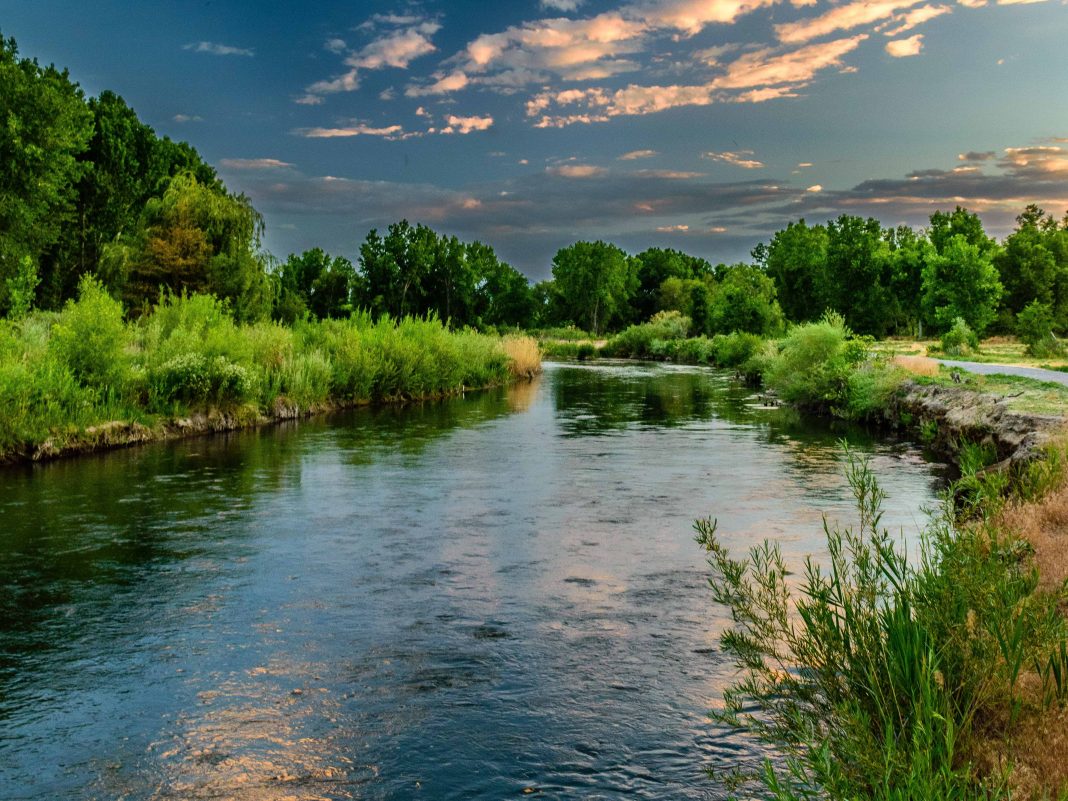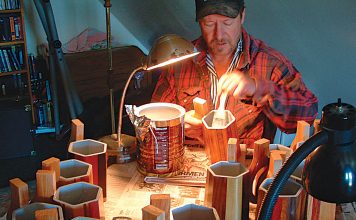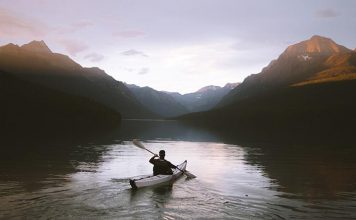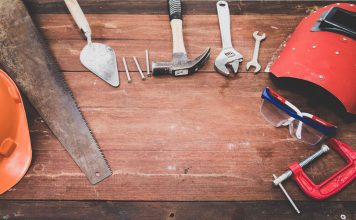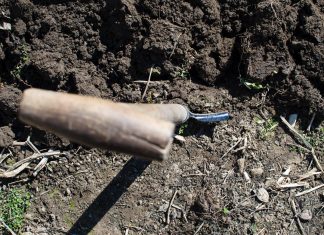 |
|
| Issue #146 • March/April, 2014 |
Most of us can stay alive up to a month without any food if stranded, but we could not live longer than three days without water to drink. Some satisfy this need through the high-water content of soft drinks, milk, coffee, beer, or tea. Regardless of our choice of drinks, our bodies must have water to drink or we will die.
You would think something this critical to life would be considered extremely valuable. However, since we are never more than a few feet away from a water faucet or water fountain, and receive a free glass of water as soon as we sit down in any restaurant, we take clean drinking water and clean ice for granted.
I have worked in several modern countries where the only safe drinking water was bottled water. I have also been in some countries where drinking the local water or adding locally-made ice to bottled water would make most westerners deathly ill. No doubt some readers live in areas where clean utility-supplied water is not available, and others may live in states where the geology makes drilled wells very expensive, if even possible.

A clear mountain stream may look inviting for a cool summer drink, but it can carry dangerous micro-organisms from dead animals or feces deposited upstream.

Sand filters are good for initial removal of pump-damaging grit and sediment, but will not remove dangerous micro-organisms.

Whole-house water filter with replaceable filter element.

A 1,000 gallon non-pressure water holding tank from solar-powered pump.

A ½-inch, pipe-sized ultraviolet final filter and separate flow switch.

Solar-powered 1-inch, pipe-sized Viqua “Sterilight” ultraviolet filter with separate lamp controller.
Background
While it is estimated that more than 70% of the earth’s surface is covered with some form of water, only 2% of this surface water is fresh water and not salty or contaminated. In addition, fresh water is not always located close to populated cities or agricultural areas and may have to be pumped hundreds of miles. Of the known below-ground freshwater aquifers, less than half are easily accessible.
I live in rural Virginia and almost anywhere you sink a well, you will hit fresh water at less than a 30-foot depth, and find a major freshwater aquifer just over 100 feet down. However, when I work on solar projects in western states, I have had clients who drilled multiple wells up to 600 feet deep and still did not find water. Farming states relying primarily on pumped wells for irrigation have already permanently lowered the groundwater tables due to farming demand, making future pumping that much more costly. As these water tables drop, the size of the pumps significantly increases, along with the electrical power required to pump the same gallons at greater and greater depths.
Some areas in China now have to drill wells more than half a mile deep to find fresh water as all aquifers nearer the surface have been totally depleted. Closer to the United States, water tables in Mexico are dropping more than six feet per year due to overpumping for an expanding population. Since the 1950s, groundwater levels in New Mexico have dropped as much as 100 feet. In Arizona, Texas, California, Utah, Colorado, Oklahoma, Kansas, and Nevada, groundwater levels are dropping several feet per year. While some of this loss can be attributed to recent years of drought conditions, overpumping will most likely continue to exceed the natural resupply cycle even after these drought conditions finally end.
North Dakota is currently in an oil and gas boom due to new hydrolic fracturing (fracking) technology. Unfortunately, this fracking requires pumping massive quantities of water down into each oil or gas well, reducing available public water resources and driving up costs for the small co-ops supplying residential customers.
Tapping into deeper aquifers does not always guarantee good water quality either. Many of these underground pools are brackish, which can damage soils used for crop production when pumped year after year for farm irrigation. The very deep freshwater aquifers located under western states were originally created from melting freshwater ice sheets over 1,000 feet thick which formed during the last ice age they will not be replenished once they are pumped out.
What’s in the drinking water?
Most properly-drilled wells provide water that is safe to drink, but it may not taste or smell good depending on where you live. Areas with a high-sulfur presence can cause well water to have a “rotten egg” smell, and high iron deposits can cause rust-colored water. Low pH levels cause well water to be slightly acidic, which slowly corrodes copper piping and causes blue stains on plumbing fixtures. Dissolved solids like calcium and magnesium are common in shallow-depth wells, and can cause scale formation under dripping faucets and can damage water heaters and coffee pots. Although there are a few exceptions, in general, most well water is still safe to drink even if it has one or more of the conditions just outlined. Regardless, any newly-drilled water well should be lab-tested and sanitized prior to use.
There are all types of water filters and water softeners available and each is designed to remove or correct one or more of the above water quality problems. Unfortunately, lakes and clear creek surface water may appear just as safe as well or city water, but can harbor all types of living organisms that can cause severe waterborne illnesses. Most harmful bacteria, parasites, viruses, cysts, and molds are microscopic in size and can easily pass straight through your typical off-the-shelf water filters.
Although extremely fine, compressed carbon filters can correct most of these water quality issues (including blocking microscopic viruses and bacteria), these filters are typically used in slow-drip tabletop water filters and are not made for pumped whole-house or multi-fixture applications. Ultraviolet light water filters can kill these microscopic organisms and are designed for higher-flow applications, but they require electricity to operate, which may not be available during an extended power outage. However, some of the smaller capacity units contain low-wattage fluorescent or newer LED-type ultraviolet lamps. These require limited electrical power which can be supplied by a fairly basic solar power system. All of the solar articles I reference at the end of this article can supply this limited power, especially if the lamps are not energized during extended periods of no water flow. Even with this type of whole-house purification system in my own home, I still own two Berkey water filters as backup in case the whole-house system fails.
So what?
What this should be is a wake-up call to everyone interested in emergency preparedness. Many of us have spent a great deal of our time and money making sure we have plenty of stored food, weapons, bullets, battery-powered radios, bug-out supplies, and generators, but not much thought has been given to a reliable long-term source of drinking water. I am starting to see signs of increased awareness, but I talk with many people who have large stockpiles of survival food, but no stored drinking water or water filter devices. I think the ready availability and low cost of safe drinking water in this country is causing most people to just assume it will always be there.
While I own multiple containers designed for long-term water storage, a large Berkey water filter for my home, and a small Berkey filter for our truck camper, this level of preparedness still may not meet the drinking water needs for larger groups during an extended emergency situation lasting months, not weeks.
Once your emergency water containers are empty and the grid has been down for weeks, your generator finally ran out of fuel, your well pump has no power to operate, and there is temporarily no surface water nearby to run though a drip-type filter, what then? The United States could become a third-world country in a matter of weeks if we ever experience a major disruption to our utility grid infrastructure. Even if we do not have a major grid failure, it is still getting more difficult each year to locate and pump fresh water from lower and lower water table depths. Many current surface water sources are becoming polluted from increased fertilizer and animal waste runoff from farms, failing septic systems, increased use of road salt, and discharge from more industrial and mining operations.
Actions to take
The most obvious first step is to keep a several week supply of water stored in proper containers, and a quality water filter with spare filters. Food-grade plastic containers with “PETE” stamped on the bottom are designed for long-term water storage and will not change the taste or leak. However, you will need a different approach during an extended utility disruption if you want to continue using your existing plumbing system with water for flushing toilets and showers, and drinking water for your kitchen and bath faucets. If your home is currently on a drilled well and has a 240-volt AC well pump, it’s possible to power this pump and other critical appliances and lights with a solar-charged battery and AC inverter system. This does not mean you have to install a large solar system to power everything. However, a small solar system to keep your well pump, freezer, radio, and a few lights powered would be a real lifesaver.
If this approach is just not in the budget, it’s possible to install a second pump in the well that is smaller and operates on 12 or 24-volt DC supplied from a nearby pole-mounted solar array. If this downsized system includes a battery bank, then the pump can be connected into the existing piping supplying the house by adding a second pressure switch. During a power outage, the water pressure will drop below the pressure switch setting that controls the 240-volt AC pump which has lost power, which triggers a second pressure switch that controls the small, DC-powered well pump.
If this system is still more complex than you want, forget the batteries and wire the small pole-mounted solar array directly to the DC well pump using a pump controller, and run the output pipe from this second pump to an aboveground storage tank. When the sun comes up, the DC pump starts to fill the tank and stops pumping when the sun goes down. While this water tank can be located remotely or in the basement or garage of the house, this system is very simple and works great without any grid power. A simple float switch can be added to stop the pump when the tank is full. If a well is not possible where you live and you rely on surface water from a lake, creek, or rainwater cistern, a solar-powered ultraviolet water filter system may be the answer.
Depending on the source of the surface water, a solar-powered water filter system may not require a second pump. This basic system will typically include a sediment filter, carbon filter, and an ultraviolet light filter. If the water source has lots of sediment or algae bloom, having a separate sand pre-filter to remove these larger particles before they reach the tank will extend the life of the expensive final-filters downstream and keep grit from damaging the pressure pump. A carbon filter which removes most chemicals, pollutants, and bad taste is typically installed just prior to an ultraviolet light filter. Smaller replaceable cartridge filters typically fit under sinks, while larger capacity units are typically wall-mounted for whole-house filter applications.
Unlike well water filter systems, surface water sources should also pass through an ultraviolet light filter, which kills all types of living organisms too small to be blocked by these mechanical type filters. The two biggest dangers with using a whole-house filter system are protecting the piping and filters from freezing, and making sure no water passes through the ultraviolet filter section when the bulb is not energized or has a delay startup when activated.
Some ultraviolet filters include a flow-switch that energizes the ultraviolet fluorescent light as soon as water flow is detected, but I have concern that it is still possible for some water to pass the lamp before it is fully illuminated. Although this water has been filtered, it could still contain micro-organisms that pass through before the ultraviolet lamp turns on. The second issue is heat buildup. If your application will have some water flow throughout the day, I prefer leaving the lamp energized continuously, as any heat buildup will be cooled by the constant flow of fresh water. This ensures that absolutely no unsafe water will pass this filtering system. Keep in mind, you do not need this level of water filtering for using your toilets, washing your car, or watering the garden, so only filter the water supplying sinks and showers to reduce the load on the filter system.
If you must rely on stored rainwater or surface water from a nearby creek or pond when a drilled well is not possible, I suggest using a small, solar-powered 12- or 24-volt DC pump to pump this water through a sand filter into a temporary holding tank in the 500 to 1,000-gallon range. Having a small DC pump for this initial pumping and pre-filter stage allows a slow flow of water all day using only solar power and a pump that will require minimum battery power due to the slow flow rate. A second pressure-type pump takes water from this tank to supply pressurized water to the toilets and yard hydrants, as well as a separate supply that passes through the carbon filter and ultraviolet light filter before supplying sinks and showers. Refer to the piping diagram to see how this piping is connected.

Piping diagram
What is an ultraviolet filter?
An ultraviolet filter is actually a sealed hollow tube or stainless steel container that allows pre-filtered water to flow from end to end while passing around a clear tube positioned down the center of this container. This clear tube houses an ultraviolet lamp. Some newer designs are starting to use LED lamps that produce ultraviolet light, but most larger units still use fluorescent tubes. The smaller capacity units typically use a lamp in the 13- to 25-watt range, while larger whole-house systems may require a 40-watt ultraviolet fluorescent lamp up to four feet long.
The purpose of the ultraviolet filter is to kill any living organisms that can cause waterborne diseases. An ultraviolet filter will not remove sediment, iron, heavy metals, chlorine, radon, arsenic, or bad taste, so these problems must be addressed by other pre-filter media. All ultraviolet light water filters must be used in addition to sediment pre-filters and carbon filters. For basic fresh water needs, some manufacturers are now making self-contained portable units that fit in a small suitcase-size package. Be sure to select an ultraviolet filter sized for the intended flow-rate and capacity of your water supply. A fast water flow may not allow the water enough illumination time before exiting the ultraviolet light filter if it is undersized or the lamp wattage is too low.
Summary
The above descriptions of the different water filtering methods and water quality concerns should help you determine which approach is best for your emergency drinking water needs. I have published several solar articles in prior issues of Backwoods Home Magazine that can power these various water treatment and emergency water pumping systems. For more detailed piping and wiring information, please refer to the following back issues:
Water: a safe supply when you’re off the grid Issue #71 (12th Year Anthology)
Solar power 101: Batteries Issue #87 (15th Year Anthology)
Build your own solar-powered water pumping station Issue #91 (16th Year Anthology)
Prepper power Issue #136
Prepper power, part II Issue #137
Suppliers of water purification equipment:
Berkey water filters — www.berkeyfilters.com
Viqua ultraviolet water filters — www.viqua.com
Pura ultraviolet filters — www.freshwatersystems.com
Minipure ultraviolet filters — www.purestfilters.com
SurvivorPro portable ultraviolet filters — www.safh2ouv.com
Responder ultraviolet portable filters — www.aqua-sun-intl.com
Surewater long-term water storage — www.surewatertanks.com
Water storage tanks and supplies — www.beprepared.com
Water storage tanks and supplies — www.prepperwaterstorage.com
News Update
After submitting this completed article for publication several weeks ago, this past Thursday a chemical storage plant in Charleston, West Virginia, had a leak in a 40,000 gallon storage tank that allowed an estimated 7,500 gallons of stored 4-methylcyclohexane methanol to run downhill and into the nearby Elk River. While not deadly, this chemical causes blisters and severe rashes on skin and can make you very sick if even a small amount is ingested. Believe it or not, this storage facility is located only two miles upstream from the main water plant intake that supplies more than 300,000 homes and businesses in the surrounding nine counties including my 92-year-old mom who lives 10 miles downstream. Obviously, this was an accident just waiting to happen. My mom did have some stored bottled water at my past insistence and was able to get by for the two days until we could get there. On Saturday, we loaded the pickup from our home in Virginia with a 210-gallon portable water tank plus lots of bottled water, food, paper plates, plastic silverware and cups, and drove the six hours into Charleston. The Health Department had immediately closed all restaurants and hotels, so there was nowhere to go for 20 miles in all directions to wash or get a meal. People could not drink the water, wash clothes, wash dishes, brush teeth, wash hands, prepare cooked meals, shower, shave, or water pets and farm animals. All store shelves were immediately stripped of any bottled water and hand wipes.
On Saturday night a local Wal-Mart received the first tractor-trailer load of bottled water but had to call in the State Police to hold back crowds as the employees tried to move the water from the parking lot to the empty store shelves. By Sunday morning, several emergency tanker trucks arrived at several local parking lots to fill empty containers and give away what limited bottled water they had. Unfortunately, many people in the smaller towns surrounding Charleston are retired or disabled and could not get to these emergency distribution centers. After helping my mom, we drove the truck around the local community and filled hundreds of empty milk jugs. Whoever we helped would call a neighbor who would limp out with their empty jug and we soon had a line on many of the streets where we parked. Since the state recently had a big snow, the residents were lucky that it had cleared up by this weekend and they did not lose power. While it could be many days before the system can be completely flushed to allow drinking and bathing, people may be able to at least start washing clothes and dishes soon. Before deciding to take one of my water filter units with us, I emailed the manufacturer and was told this chemical could not be filtered out since it was a solvent that dissolves in water. Regardless of what type of water filters you own, having several weeks of stored drinking water in proper containers should be a large part of everyone’s emergency planning. For me, I intend to start saving all my empty plastic water jugs this was the one thing most of these people did not have on hand, due to all the plastic recycling programs. Jeff
[weaver_widget_area id=’articles_about_yago’ class=’text3′]


